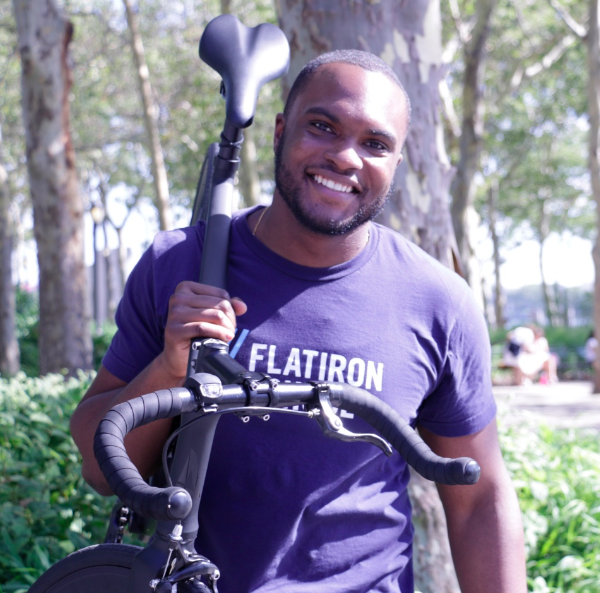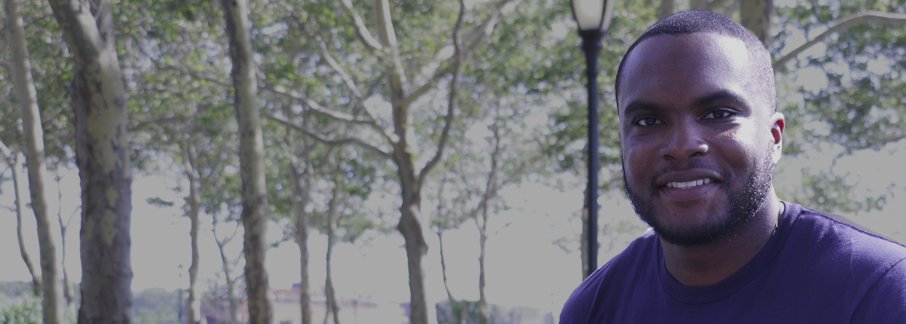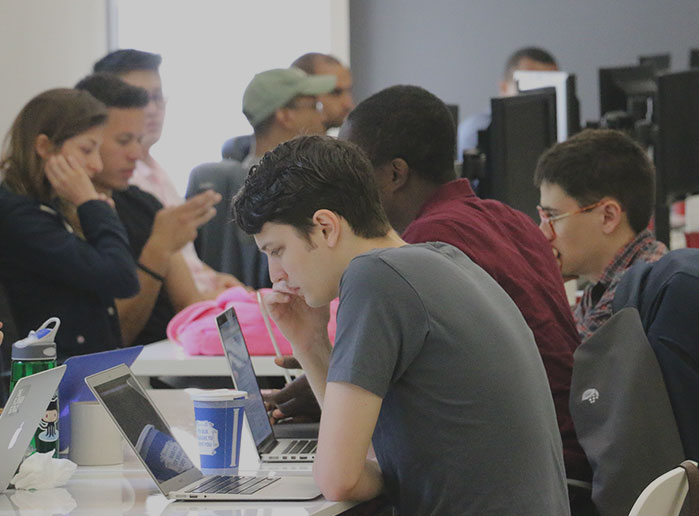Reuben Ogbonna didn’t always think he’d be a teacher — as an economics and finance enthusiast, he planned to follow the Wall Street track. But after a study abroad experience in Turkey led him to a life-changing economics class, Reuben’s personal aspirations changed irrevocably.
After working for Teach for America, Flatiron School selected Reuben from a pool of hundreds of applicants for a Computer Science Teaching Fellowship where he learned to love code. A North Carolina native, Reuben has since moved to Brooklyn and has a serious crush on his bike. Read on to hear about Reuben’s summer teaching Pre-College, the transformative nature of code, and how he wants to change education.

When I was a junior in high school, I had the opportunity to mentor a young student named Mike in a remedial class. I grew up in a very middle-class household, and I hadn’t been exposed to what life was like with financially unstable parents and gang violence. One day his teacher called me because Mike was acting up and he was going to get suspended again. I said, “Mike, what are you doing? You could get your act together and go to college.” He said, “I could go to college?” At that time, I was the first person to tell him he could, which blew my mind.
I continued mentoring every year since then. In college, I studied economics and finance, and was planning on pursuing a career in financial services post graduation — until I took a class in Istanbul, Turkey where I learned about financial collapses of emerging markets in various countries. We looked at data that showed the real-life effects of irresponsible policy decisions driven by greed. And after a particularly rough summer, it hit me then that I wanted to take a different career route… I just didn’t know what that route was at the time. Nonetheless, because of my passion for mentorship and serving low-income communities, applying for Teach for America seemed like a logical next step.
What was it like learning to code for the first time?
It was fun! I had never been into Sudoku or crossword puzzles or anything, but as a math teacher and economics major, I have been trained to think in a very linear path. I am used to using logic to solve problems with singular solutions. I enjoy programming because there are always multiple pathways to the same solutions. There is a creative element involved.
“When you teach kids how to code, you give them a sense of agency.”
What was your favorite language to work with?
I really liked Ruby. It’s super intuitive and reads like English in a lot of ways. However, working with HTML and CSS to create my first personal website was a lot of fun. I’ve never been much of a visual artist, but for the first time in my life I felt like I had the ability to design something that was beautiful.
What were some of the highlights throughout this summer working with the kids?
There was one girl who originally wanted to do a dance camp, and her dad made her sign up for Flatiron instead. She was over it from day one. But my co-teacher, Ruth, latched onto her and did not let her fall behind. She grew so much by the end of the summer. At first she wouldn’t talk to anybody — by the end of the class, she was laughing and joking with friends, and said she was going to sign up for an advanced class next. What she’s learned in code is amazing, but what’s even more powerful is the sense of confidence that she has gained over the course of two short weeks.
You’re going to be the Dean of Students at Coney Island Prep High School come fall. What are your plans on implementing coding at the school?
We do have a CS class, but I would like to help make technology a key part of our school’s culture. For me, it is so much bigger than making apps and solving puzzles. When you teach a kid how to code, you give them a sense of agency. After only two weeks at Flatiron, high school students build and deploy functioning web applications that anyone with an internet connection can view and use. By the end of the summer, we have indirectly sent the message that students have the right and responsibility to create real, working solutions to problems that they face on a regular basis. This mentality ends up translating to other areas of the students’ lives as well. It is my goal that through coding, we can build this mentality in our students at Coney Island Prep.
The idea of being a creator, a maker of something that they have a personal investment in is powerful. In an ideal world, I would love to have every other subject taught the way we teach code at Flatiron. How can we get every single subject to engage students around building out a real-world application they have a personal investment in?
Anything else you’d like to add?
This experience holds a special place in my heart because I’m passionate about serving communities that are typically underserved. Many times, these communities are primarily made up of people who look like me. This skill we taught has the ability to transform communities.
One of the biggest issues we fight against — from a motivational perspective — is that school doesn’t seem relevant to kids. If I could show them this knowledge base and this skill set, that will allow them to make their lives better tomorrow. I don’t have to trick them with stickers and candy, I don’t have to trick them with a grade. I can motivate them with something that’s real — and that’s a game changer.
Written byFLATIRON SCHOOL
Make yourself useful.

